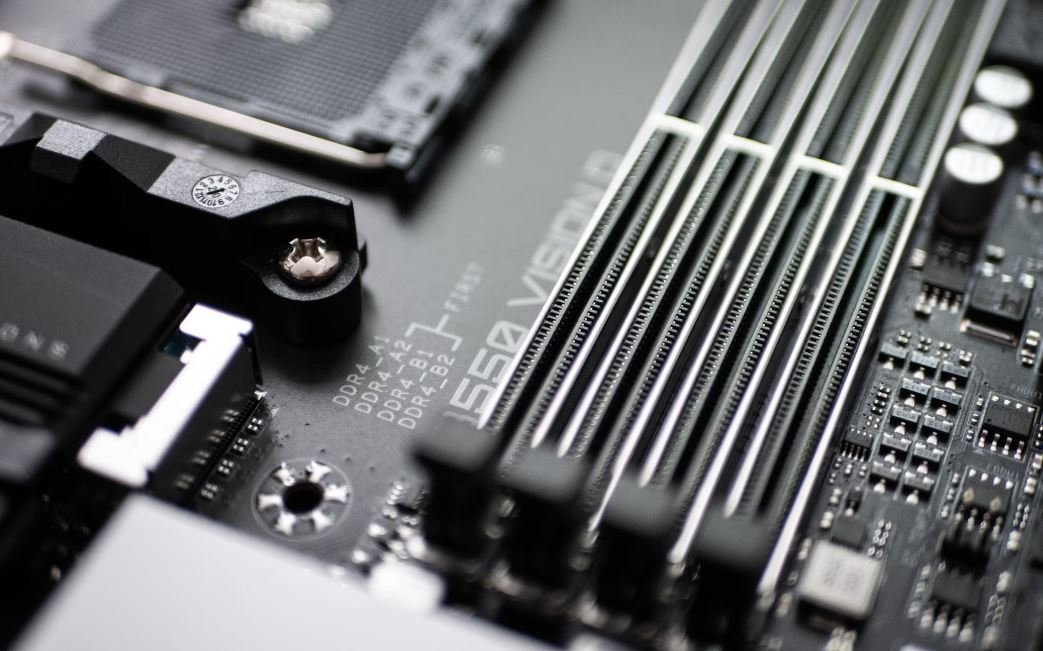Why Deep Learning Is Called Deep
Deep learning is an emerging branch of machine learning that has gained significant attention in recent years. This powerful technique has been leveraged to achieve breakthroughs in various fields, including computer vision, natural language processing, and speech recognition. But why is it called “deep” learning?
Key Takeaways
- Deep learning refers to the use of deep neural networks with multiple layers.
- Its name originates from the depth at which information is processed through these layers.
Deep learning gets its name from the architecture of deep neural networks. These networks consist of multiple layers of interconnected nodes, known as neurons, that process and transfer information. Each layer performs a specific computation to transform input data into a more useful representation. By leveraging this deep architecture, deep learning models can learn complex patterns and extract high-level features from data, leading to improved performance compared to traditional machine learning techniques.
With deep learning, information flows through multiple layers of neurons, allowing for increasingly abstract and sophisticated representations of the input.
To better understand the concept of “deep” in deep learning, consider the analogy of a hierarchical organization. Just as an organization has different levels of management, with each level responsible for specific tasks and decisions, deep neural networks also have multiple layers that progressively extract more complex representations of the input data. At each layer, the network learns to extract increasingly abstract features, enabling it to understand the data at a deeper level with each subsequent layer.
Deep learning can be likened to a hierarchical organization, where lower layers focus on simple features and higher layers capture more complex concepts.
Learning Depth: An Advantage of Deep Learning
The depth of deep neural networks contributes to the advantages of deep learning over traditional machine learning approaches. Here are a few reasons why deep learning is called “deep” and why it matters:
- **Representation Power**: Deep neural networks can learn hierarchical representations of data, allowing them to capture intricate relationships and extract meaningful features from raw input.
- **Feature Reusability**: Lower layers of a deep network can often be reused for other tasks, promoting reusability of learned features and enabling transfer learning.
- **End-to-End Learning**: Deep learning models can learn to perform end-to-end tasks, eliminating the need for manual feature engineering by automatically learning the best representations from raw data.
- **Better Performance**: The ability of deep networks to learn complex patterns and model highly nonlinear relationships leads to improved performance compared to shallow models.
In deep learning, the hierarchical nature of deep neural networks enables them to learn intricate relationships, extract reusable features, and achieve superior performance.
Comparing Depth: Deep Neural Networks vs. Shallow Networks
To further highlight the significance of depth in deep learning, let’s compare deep neural networks to shallow networks. The table below provides a comparison of these two types of architectures:
| Deep Neural Networks | Shallow Networks |
|---|---|
| Consist of multiple layers of neurons | Have only one or a few layers of neurons |
| Learn complex patterns and extract high-level features | Have limited learning capacity and feature extraction ability |
| Enable hierarchical representation learning | Focus on shallow representations |
Deep neural networks have multiple layers, allowing them to learn complex patterns and extract high-level features, while shallow networks have limited capacity for learning and feature extraction.
In addition to the architectural differences, deep neural networks require more computational resources for training due to their increased depth. However, advancements in hardware and the availability of frameworks optimized for deep learning, such as TensorFlow and PyTorch, have made it feasible to work with deep networks even on standard hardware.
Deep is the Future
As deep learning continues to make significant advancements in various domains, it becomes clear that the depth of neural networks plays a crucial role in their success. The ability to learn hierarchical representations, capture intricate relationships, and model complex patterns sets deep learning apart from traditional machine learning approaches. By going beyond the surface level of data, deep neural networks unlock new possibilities for solving complex problems and driving innovation.
The depth of deep learning enables the discovery of intricate relationships and the extraction of complex patterns, making it an indispensable tool in the future of machine learning.

Common Misconceptions
Paragraph 1
One common misconception about why deep learning is called deep is that it refers to the complex and intricate nature of the mathematical models used in deep learning algorithms. However, this is not the case.
- Deep learning is called deep because it involves stacking multiple layers of artificial neural networks.
- Each layer in the network processes and transforms the input data, allowing the model to learn increasingly abstract representations as it goes deeper.
- These stacked layers create the depth in deep learning models, hence the name.
Paragraph 2
Another common misconception is that deep learning refers to the hierarchical structure of the artificial neural networks used. While it is true that deep learning models are hierarchical, this is not the main reason why they are called deep.
- The hierarchical structure enables the model to learn complex features from simple ones, but the term “deep” specifically refers to the number of layers in the network.
- Deep learning models typically have multiple hidden layers, allowing them to learn and represent increasingly sophisticated patterns and structures.
- It is this depth in the architecture that distinguishes deep learning from shallow learning models with fewer layers.
Paragraph 3
One misconception is that deep learning is called deep because it can perform more complex tasks compared to shallow learning models. While deep learning is indeed highly capable, this is not the reason behind its designation.
- Deep learning models are not inherently more complex than shallow learning models in terms of the number of computational operations they perform.
- The primary factor contributing to the increased capabilities of deep learning is the ability to learn hierarchical representations.
- Deep learning models can recognize and extract intricate patterns and features from data, without explicitly being programmed for specific tasks.
Paragraph 4
There is a misconception that deep learning is called deep due to its resemblance to the functioning of the human brain. Although deep learning draws inspiration from neural networks in the brain, the term “deep” does not directly relate to this aspect.
- Deep learning models are inspired by the way neurons in the brain are interconnected, but they are not an exact replica of the human brain.
- The depth in deep learning models primarily refers to the number of layers they contain, rather than being a literal representation of the brain’s neural structure.
- However, the hierarchical nature of deep learning does mimic the hierarchy of information processing in the brain to some extent.
Paragraph 5
Lastly, there is a misconception that deep learning is solely focused on processing visual data, such as images and videos. While deep learning has seen significant success in computer vision tasks, it is not limited to this domain.
- Deep learning has been successfully applied in various fields, including natural language processing, speech recognition, recommendation systems, and even healthcare.
- The depth of deep learning models allows them to automatically learn and extract relevant features from different types of data, making them powerful tools for many applications.
- Deep learning’s versatility and ability to handle diverse datasets make it a valuable technique beyond visual processing alone.

History of Machine Learning
Before understanding why deep learning is called “deep,” it’s important to have a brief overview of the history of machine learning. Machine learning is a subfield of artificial intelligence that focuses on the development of algorithms that can learn and make predictions or decisions without explicit programming. In the past, traditional machine learning algorithms could only process a shallow number of layers, limiting their capacity for complex tasks. This led to the development of deep learning algorithms, which can process multiple layers of data, allowing for more intricate and nuanced decision-making.
Deep Learning vs. Shallow Learning
To better grasp the concept of deep learning, it’s crucial to understand its distinction from shallow learning. Shallow learning, also known as “traditional” machine learning, operates using a single layer or only a few layers of data processing. Deep learning, on the other hand, incorporates multiple layers that enable the algorithm to extract higher-level features and patterns. This table presents a comparison between deep learning and shallow learning:
| Deep Learning | Shallow Learning |
|---|---|
| Multiple layers of data processing | Single or few layers of data processing |
| Capable of learning complex patterns | Limited capacity for complex patterns |
| Requires a large amount of data | Can work with smaller datasets |
Components of Deep Learning
The process of deep learning involves various components working together to achieve accurate predictions and decision-making. This table highlights the key components of deep learning:
| Neural Networks | Activation Functions | Loss Functions | Optimization Algorithms |
|---|---|---|---|
| Composed of interconnected nodes inspired by the human brain | Transforms input data into a more manageable form | Evaluates the difference between predicted and actual outcome | Adjusts the neural network to minimize the error |
| Composed of multiple layers with increasing complexity | Enables nonlinear mapping of input data | Determines the direction and magnitude of adjustments | Employs iterative methods to optimize the neural network’s parameters |
Applications of Deep Learning
The versatility of deep learning has led to its widespread adoption across various domains. This table showcases some of the compelling applications of deep learning:
| Computer Vision | Natural Language Processing | Speech Recognition | Generative Models |
|---|---|---|---|
| Object detection, image classification, facial recognition | Language translation, sentiment analysis, chatbots | Speech-to-text conversion, voice assistants | Creating synthetic data, realistic image generation |
| Self-driving cars, surveillance systems | Virtual assistants, language generation | Automated transcription, voice command systems | Art, music, and video generation |
Deep Learning Frameworks
To facilitate the development and implementation of deep learning models, numerous frameworks have been created. These frameworks provide tools, libraries, and APIs that aid in building and training deep learning models. The most popular frameworks include:
| TensorFlow | PyTorch | Keras | Caffe |
|---|---|---|---|
| Open-source library developed by Google | Highly flexible and widely adopted | User-friendly, built on top of TensorFlow | Popular for computer vision tasks |
| Supports a broad range of applications | Dynamic computational graphs, intuitive API | Compatible with TensorFlow and Theano backends | Efficient implementation for deep learning |
The Deep Learning Pipeline
Deep learning projects follow a typical pipeline, encompassing various stages and processes. This table outlines the general steps involved in a deep learning pipeline:
| Data Acquisition | Data Preprocessing | Model Building | Model Training | Model Evaluation |
|---|---|---|---|---|
| Gathering a diverse and representative dataset | Cleansing, normalizing, and splitting the data | Designing and configuring the neural network architecture | Adjusting weights and biases via backpropagation | Assessing model performance on test data |
| Data augmentation and feature engineering | Handling missing values and outliers | Selecting suitable activation and loss functions | Using optimization algorithms to minimize error | Metrics: accuracy, precision, recall, etc. |
Challenges in Deep Learning
While deep learning offers immense potential, it also comes with a set of challenges that researchers and practitioners must overcome. This table highlights some prominent challenges in the field:
| Overfitting | Data Insufficiency | Computational Complexity | Interpretability |
|---|---|---|---|
| When a model becomes too specialized in the training data | For some applications, collecting sufficient labeled data is difficult | Training deep networks requires substantial computational resources | Understanding why a model makes specific decisions is challenging |
| Regularization techniques to prevent overfitting | Transfer learning, synthetic data generation | Optimizations: GPU utilization, distributed computing | Researching interpretability methods and techniques |
The Future of Deep Learning
Considering the rapid advancements and growing interest in deep learning, the future appears promising. Deep learning has the potential to revolutionize numerous industries and drive innovation in AI technologies. With ongoing research and development, breakthroughs will continue to make deep learning more accurate and efficient, enabling new and exciting applications.
Frequently Asked Questions
Why is deep learning called deep?
What is the reason behind calling deep learning “deep”?
What distinguishes deep learning from other machine learning approaches?
How does deep learning differ from other machine learning techniques?
What are the advantages of using deep learning?
What are the benefits of utilizing deep learning techniques?
How is deep learning different from shallow learning?
What sets deep learning apart from shallow learning?
What are some popular deep learning architectures?
Which deep learning architectures are widely used?
Can deep learning models be trained on small datasets?
Is it possible to train deep learning models with limited data?
What are some popular tools and frameworks for deep learning?
Which tools and frameworks are commonly used for deep learning?
Are there any limitations or challenges in deep learning?
What are some limitations or challenges associated with deep learning?
What is the future of deep learning?
What does the future hold for deep learning?




